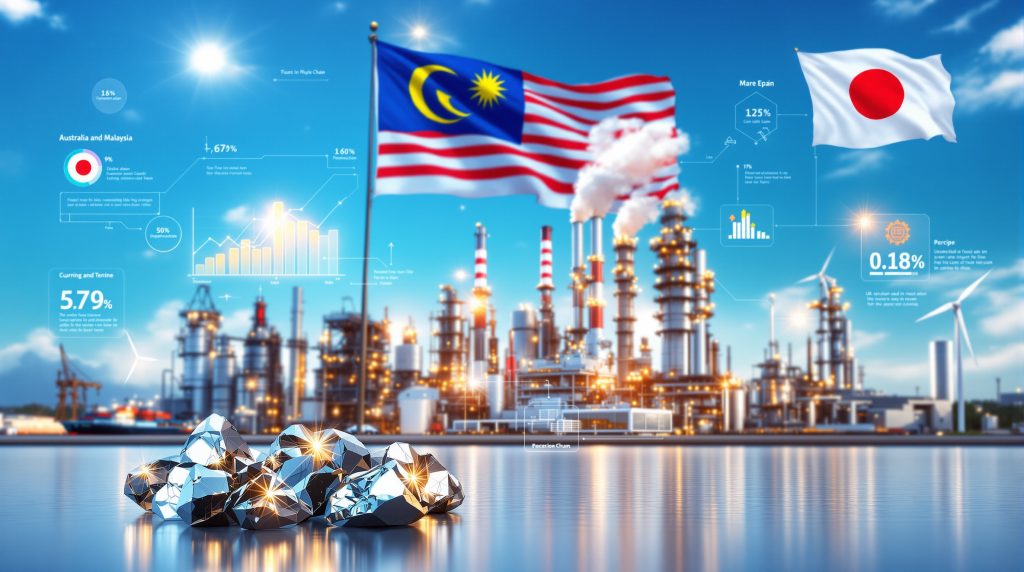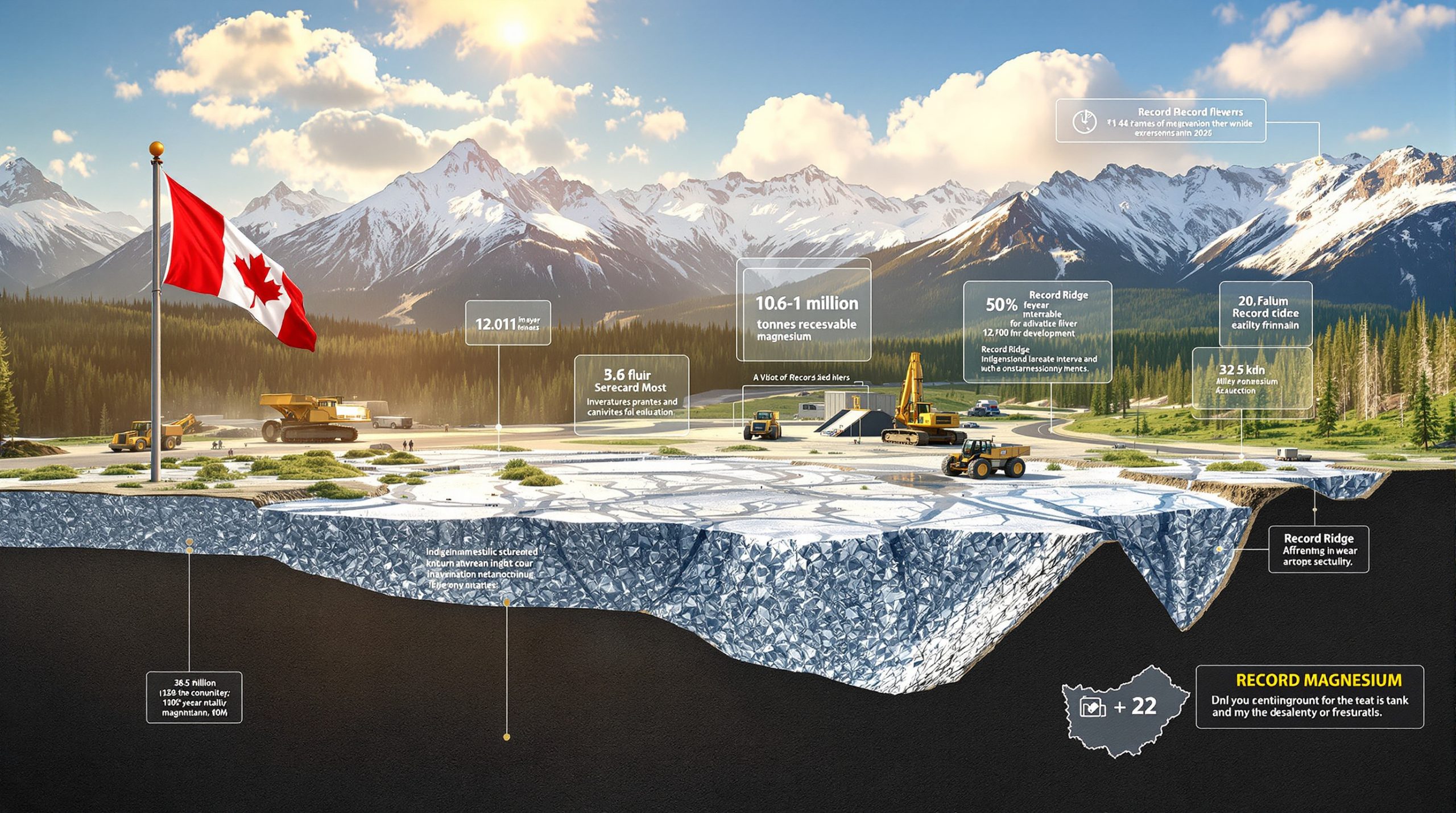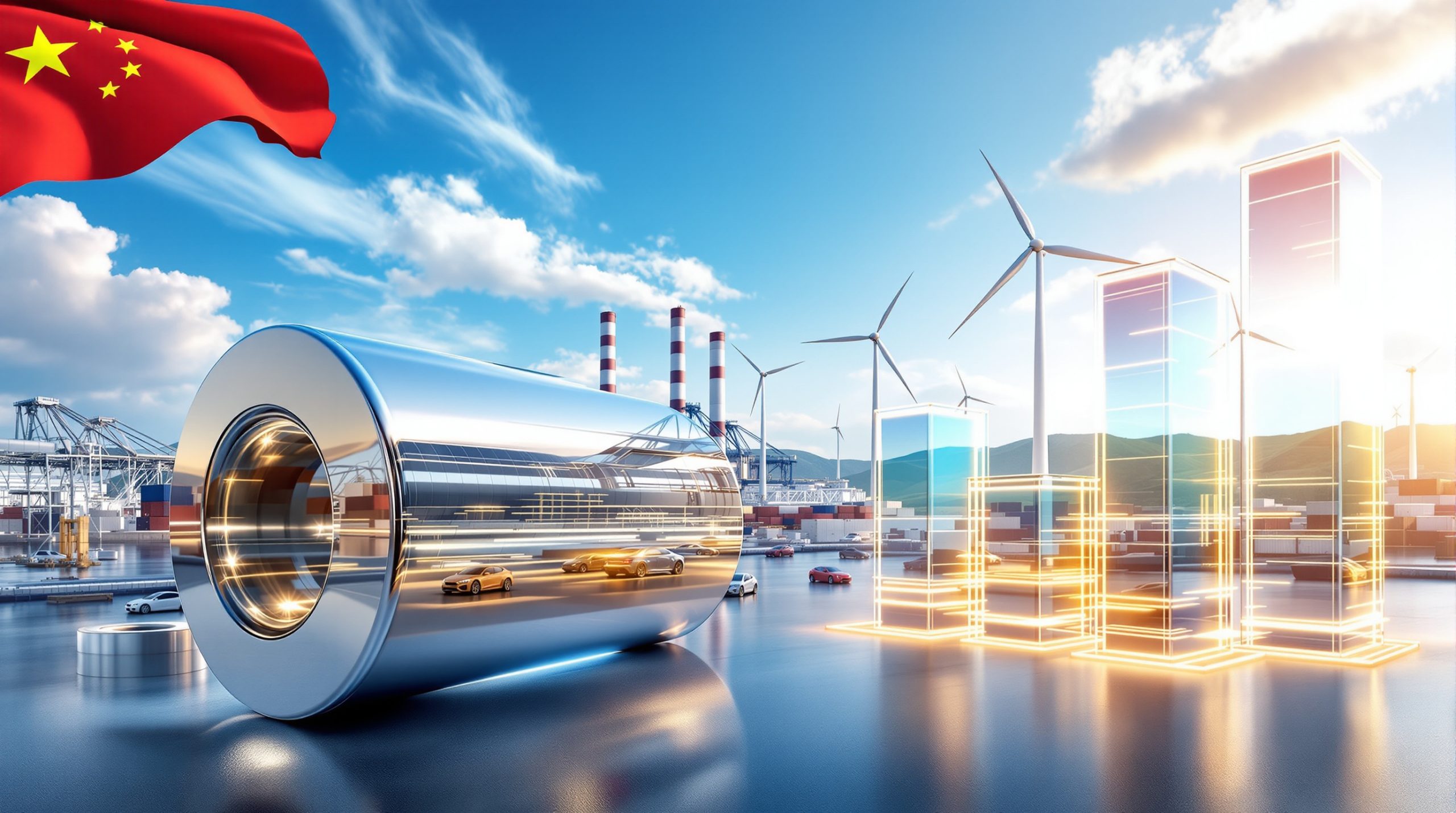Understanding Japan's Strategic Pivot in Critical Mineral Sourcing
Japan Sojitz rare earths imports from Australia represents a fundamental transformation in global resource procurement strategies. This development showcases how nations actively restructure their supply chains to reduce dependency on single-source suppliers while enhancing economic security across critical industries.
The significance of this achievement extends beyond simple trade relationships. As China continues tightening export controls on critical minerals, Japan has positioned itself at the forefront of supply chain diversification efforts. The October 2025 announcement marks the first successful imports of heavy rare earths produced from Australian ore, separated and refined in Malaysia, then delivered to Japanese markets.
Strategic partnerships between Japan, the United States, and their allies demonstrate coordinated approaches to building supply chains outside China's sphere of influence. This week's framework agreement between US President Donald Trump and Japan Prime Minister Sanae Takaichi signals sustained government commitment to securing critical mineral supplies through international cooperation and shared investment strategies. Furthermore, this aligns with the Trump executive order on critical minerals, which emphasises America's commitment to resource security partnerships.
What Are Heavy Rare Earths and Why Do They Matter?
Heavy rare earth elements serve as essential components enabling the functionality of next-generation technologies across multiple industrial sectors. These materials, particularly dysprosium and terbium, provide unique magnetic properties that cannot be replicated by conventional alternatives in high-performance applications.
The strategic importance of these elements stems from their role in permanent magnet production for electric vehicle motors, wind turbine generators, and advanced electronics systems. Unlike light rare earths, heavy rare earths maintain their magnetic properties under extreme temperature conditions, making them irreplaceable in demanding applications related to the critical minerals energy transition.
Critical Applications Driving Demand
Electric Vehicle Manufacturing:
- Motor magnets requiring sustained performance at elevated operating temperatures
- Battery cooling system components utilising rare earth-enhanced materials
- Regenerative braking systems incorporating precision magnetic elements
Renewable Energy Systems:
- Wind turbine permanent magnet generators for offshore installations
- Solar panel tracking mechanisms requiring precise motor control capabilities
- Energy storage systems incorporating rare earth-enhanced components
Defence and Electronics Applications:
- Advanced radar systems demanding high-performance magnetic materials
- Precision guidance systems for aerospace applications
- Miniaturised electronics requiring compact, efficient magnetic components
How Does the Australia-Malaysia-Japan Supply Chain Work?
The newly established supply route operates through a sophisticated three-stage process that maximises each participating nation's comparative advantages in rare earth production, processing, and distribution. This trilateral approach creates resilience whilst optimising operational efficiency across the entire value chain.
Stage 1: Australian Mining and Initial Processing
Australian operations focus on ore extraction from established rare earth deposits, with initial concentration and preparation procedures conducted locally. Quality control measures ensure mineral composition meets specifications for downstream processing requirements.
The selection of Australian sources reflects the country's abundant rare earth reserves and established mining infrastructure. These operations benefit from stable regulatory environments and proven extraction methodologies developed over decades of mineral production experience, contributing to Australia's critical minerals reserve initiatives.
Stage 2: Malaysian Separation and Refining
Malaysian facilities conduct advanced separation techniques to isolate individual rare earth elements from concentrated ore materials. The refining processes achieve commercial-grade purity levels required for industrial applications whilst maintaining environmental compliance standards.
Malaysia's strategic position as the processing hub leverages existing infrastructure and technical expertise in rare earth separation technologies. The country's regulatory framework supports efficient processing operations whilst ensuring environmental protection protocols remain in place.
Stage 3: Japanese Distribution and Integration
Japanese operations conduct final quality verification procedures before integrating materials into domestic manufacturing supply chains. Distribution networks ensure timely delivery to end-user industries across automotive, electronics, and renewable energy sectors.
The integration phase represents the culmination of strategic planning efforts to secure reliable supplies of critical materials for Japan's industrial base. This stage emphasises quality assurance and supply chain coordination to support manufacturing excellence, particularly as global supply dynamics shift due to US-China trade impacts.
What Economic Benefits Does This Partnership Deliver?
The collaboration between Sojitz and international suppliers generates measurable advantages across supply security, pricing stability, and strategic independence metrics. These benefits compound over time as the supply chain matures and processing capacity expands to meet growing demand.
Supply Chain Diversification Impact
| Benefit Category | Strategic Advantage |
|---|---|
| Geographic Distribution | Multiple sourcing locations reduce single-point failures |
| Processing Alternatives | Malaysian facilities provide competitive processing options |
| Strategic Partnerships | Trilateral cooperation enhances supply security |
| Market Competition | Alternative suppliers promote pricing transparency |
Supply security improvements represent the most significant economic advantage of this partnership. By establishing reliable sources outside China's sphere of influence, Japan Sojitz rare earths imports from Australia reduces exposure to export control restrictions and geopolitical supply disruptions that could impact critical industries.
Price stability benefits emerge from competitive alternatives to existing market structures. Multiple suppliers create pricing transparency whilst reducing the market power of dominant producers, leading to more predictable cost structures for Japanese manufacturers.
Processing efficiency gains result from optimised workflows across three specialised production stages. Each participating country contributes its core competencies, creating operational advantages that single-country supply chains cannot achieve independently. However, this development also reflects the big pivot on critical minerals strategy adopted by many nations.
How Are International Partnerships Reshaping Critical Mineral Markets?
Recent diplomatic frameworks demonstrate coordinated approaches to securing critical mineral supplies through multilateral cooperation and shared investment strategies. The US-Japan framework agreement signed this week represents a significant milestone in international resource security cooperation.
Framework Agreement Components
Joint Investment Initiatives:
- Shared funding mechanisms for mining project development
- Coordinated investment in processing facility expansion
- Risk-sharing arrangements for exploration activities
Technology Transfer Programs:
- Advanced extraction technique sharing between partner nations
- Processing efficiency improvements through collaborative research
- Environmental protection technology development initiatives
Strategic Coordination Mechanisms:
- Emergency reserve management protocols for supply disruptions
- Market intelligence sharing networks for informed decision-making
- Coordinated responses to trade restrictions and export controls
These partnerships signal a fundamental shift toward resource security cooperation rather than competitive isolation. Nations recognise that collaborative approaches generate superior outcomes compared to individual supply chain development efforts.
What Challenges Face Alternative Rare Earth Supply Chains?
Establishing competitive alternatives to existing market structures requires addressing operational, economic, and technical obstacles that impact long-term viability. These challenges vary across different stages of the supply chain, from mining through final product delivery.
Operational Challenges
Processing Capacity Limitations:
Building sufficient separation and refining infrastructure requires substantial capital investment and technical expertise. Current alternative processing capacity remains limited compared to established facilities, creating potential bottlenecks during demand surges.
Technical Expertise Requirements:
Rare earth processing demands specialised knowledge and experience that takes years to develop. Skilled workforce availability in emerging processing locations may constrain expansion timelines and operational efficiency achievements.
Environmental Compliance Standards:
Meeting stringent environmental regulations across multiple jurisdictions adds complexity and cost to supply chain operations. Different regulatory frameworks require customised compliance approaches that increase administrative burdens.
Transportation and Logistics Coordination:
Managing intercontinental shipping procedures for rare earth materials involves specialised handling requirements and regulatory documentation. Supply chain coordination across three countries introduces additional complexity compared to single-source arrangements.
Economic Considerations
Capital Investment Requirements:
Developing competitive processing facilities demands significant upfront investment in specialised equipment and infrastructure. These costs must be recovered through long-term supply agreements and sustained operational efficiency.
Competitive Pricing Pressures:
Alternative supply chains must achieve cost competitiveness with established producers whilst recovering development investments. Price competition from dominant suppliers can challenge the economic viability of new operations during market downturns.
Market Demand Fluctuations:
Variable consumption patterns across end-user industries create revenue uncertainty for supply chain participants. Economic cycles in automotive and electronics sectors directly impact rare earth demand levels and pricing stability.
How Do Heavy Rare Earth Imports Support Japan's Industrial Strategy?
Japan's manufacturing sector relies heavily on rare earth elements for maintaining technological leadership across automotive, electronics, and renewable energy industries. Secure supplies of dysprosium and terbium enable continued innovation and production excellence in these strategic sectors.
Automotive Industry Integration
Electric Vehicle Production:
Japanese automakers utilise dysprosium-enhanced permanent magnets in electric vehicle motors, providing superior performance characteristics compared to conventional alternatives. These magnets maintain efficiency across wide temperature ranges, essential for automotive applications.
Hybrid Vehicle Systems:
Terbium-based components enable precise motor control in hybrid powertrains, optimising fuel efficiency and performance balance. Advanced driver assistance systems incorporate rare earth sensors for enhanced safety and autonomous driving capabilities.
Electronics Manufacturing Excellence
Consumer Electronics Production:
Smartphone and tablet manufacturing requires miniaturised rare earth magnets for speakers, cameras, and vibration motors. Computer hard drive production utilises precision magnetic materials for data storage and retrieval systems.
Industrial Electronics Applications:
Advanced manufacturing equipment incorporates rare earth magnets for servo motors and precision positioning systems. Robotics applications benefit from high-performance magnetic materials enabling accurate movement control.
Renewable Energy System Development
Wind Energy Infrastructure:
Offshore wind turbine generators utilise permanent magnets containing heavy rare earths for maximum energy conversion efficiency. These systems require materials that maintain performance in harsh marine environments over decades of operation.
Solar Energy Integration:
Solar panel tracking systems incorporate rare earth magnets in precision positioning motors, optimising energy capture throughout daily sun movement cycles. Energy storage integration systems utilise magnetic components for power conditioning and grid connection applications.
What Role Does Malaysia Play in Global Rare Earth Processing?
Malaysia's position as a processing hub reflects strategic advantages in rare earth separation and refining capabilities, supported by established infrastructure and regulatory frameworks. The country's expertise enables efficient processing of Australian ore for Japanese markets.
Processing Infrastructure Advantages
Established Separation Facilities:
Existing infrastructure provides proven capabilities for rare earth separation processes, reducing development timelines and investment requirements compared to greenfield facility construction. These facilities benefit from operational experience and technical optimisation. Companies like Sojitz Corporation have been instrumental in establishing these processing relationships.
Regulatory Compliance Experience:
Malaysian operations demonstrate proven compliance with international environmental standards, providing confidence for long-term supply chain sustainability. Regulatory predictability supports investment planning and operational efficiency.
Strategic Geographic Location:
Malaysia's position between Australian suppliers and Asian markets minimises transportation costs and logistics complexity. Port facilities and shipping connections enable efficient material flow throughout the supply chain.
Technical Processing Capabilities
Advanced Separation Technologies:
Malaysian facilities employ sophisticated techniques for isolating individual rare earth elements from mixed concentrates. Quality control systems ensure consistent purity levels meeting Japanese manufacturing specifications.
Environmental Protection Systems:
Processing operations incorporate environmental protection measures that exceed regulatory requirements whilst maintaining economic competitiveness. Waste management protocols ensure sustainable long-term operations.
How Are Market Dynamics Changing for Critical Minerals?
Global rare earth markets experience significant structural changes as consuming nations implement supply diversification strategies and invest in alternative production capabilities. These shifts reshape traditional trading patterns and competitive relationships.
Supply Chain Regionalisation Trends
Shorter Supply Networks:
Regional supply arrangements reduce transportation distances and logistics complexity whilst enhancing supply security. Proximity benefits include improved communication, reduced transit times, and enhanced quality control capabilities.
Enhanced Resilience Mechanisms:
Diversified sourcing strategies create redundancy that protects against single-point supply failures. Multiple supplier relationships provide flexibility during market disruptions and enable competitive pricing negotiations.
Market Transformation Indicators
Processing Capacity Expansion:
New separation facilities in multiple geographic regions increase global processing capacity whilst reducing concentration risks. Investment in processing infrastructure signals long-term commitment to supply chain diversification.
Strategic Partnership Development:
Long-term agreements between producing and consuming nations create stability for investment planning whilst ensuring supply security. These partnerships often include technology sharing and joint development initiatives.
Innovation in Extraction Technologies:
Advanced methodologies improve extraction efficiency whilst reducing environmental impacts. Technology development focuses on sustainable processing techniques that meet environmental regulations without compromising economic viability.
What Future Developments Can We Expect in Rare Earth Trade?
The establishment of alternative supply chains signals broader trends toward supply security and strategic resource management across critical mineral sectors. Future developments will likely expand these principles to additional materials and geographic regions.
Industry Evolution Projections
Expanded Processing Network:
Additional separation facilities in diverse geographic locations will increase global processing capacity whilst reducing supply concentration risks. Investment in processing infrastructure continues as demand for critical minerals grows across multiple industries.
Enhanced Recycling Systems:
Recovery programmes for rare earths from end-of-life products will supplement primary production, reducing pressure on mining operations whilst improving resource efficiency. Technology development focuses on economically viable recycling processes. According to recent industry reports from Reuters, these initiatives are becoming increasingly important for sustainable supply chains.
Advanced Exploration Initiatives:
Discovery and development of new rare earth deposits will expand global reserves whilst providing additional sourcing options for consuming nations. Exploration technology improvements enable identification of previously unrecognised deposits.
Technology Integration Improvements:
Processing efficiency enhancements through advanced separation techniques will reduce costs whilst improving product quality. Digital monitoring systems enable real-time optimisation of processing parameters and quality control.
Market Development Implications
Competitive Market Evolution:
Multiple suppliers competing in regional markets will promote pricing transparency and service quality improvements. Competition drives innovation in processing techniques and customer service capabilities.
Strategic Stockpiling Programs:
Government-sponsored reserve programmes will provide emergency supplies during market disruptions whilst supporting domestic industries. Strategic stockpiles enhance national security whilst stabilising market conditions during supply shortages.
International Cooperation Frameworks:
Multilateral agreements for critical mineral security will expand beyond current partnerships to include additional nations and materials. Cooperation mechanisms focus on shared investment, technology development, and market intelligence.
Strategic Implications for Global Resource Security
Japan Sojitz rare earths imports from Australia through Malaysian processing facilities represents a significant milestone in global supply chain diversification efforts. This achievement demonstrates how strategic partnerships, coordinated investment, and multilateral cooperation create viable alternatives to concentrated supply structures.
The implications extend beyond bilateral trade relationships, establishing precedents for other nations seeking to enhance resource security through diversified sourcing strategies. As this supply chain matures and expands capacity, it serves as a model for similar initiatives across other critical mineral sectors.
Success factors include government support for strategic partnerships, private sector investment in processing infrastructure, and technical cooperation between participating nations. These elements combine to create sustainable alternatives that enhance global resource security whilst promoting economic development across multiple regions.
"The Australia-Malaysia-Japan supply chain demonstrates that coordinated international cooperation can successfully challenge existing market concentrations whilst creating economic value for all participants. This model provides a framework for future critical mineral security initiatives."
Future applications of this cooperation model may extend to other critical materials including lithium, cobalt, and specialised metals required for advanced manufacturing. The principles established through Japan Sojitz rare earths imports from Australia provide valuable experience for broader resource security initiatives.
Disclaimer: This analysis contains forward-looking projections based on current market developments and strategic partnerships. Actual outcomes may vary based on market conditions, technological developments, and geopolitical factors. Investment decisions should consider multiple information sources and professional guidance.
Ready to Capitalise on Critical Minerals Investment Opportunities?
Discovery Alert's proprietary Discovery IQ model delivers real-time alerts on significant critical minerals discoveries across the ASX, instantly empowering subscribers to identify actionable opportunities ahead of the broader market. Understand why historic discoveries can generate substantial returns by exploring Discovery Alert's dedicated discoveries page, showcasing exceptional outcomes from major mineral finds.




